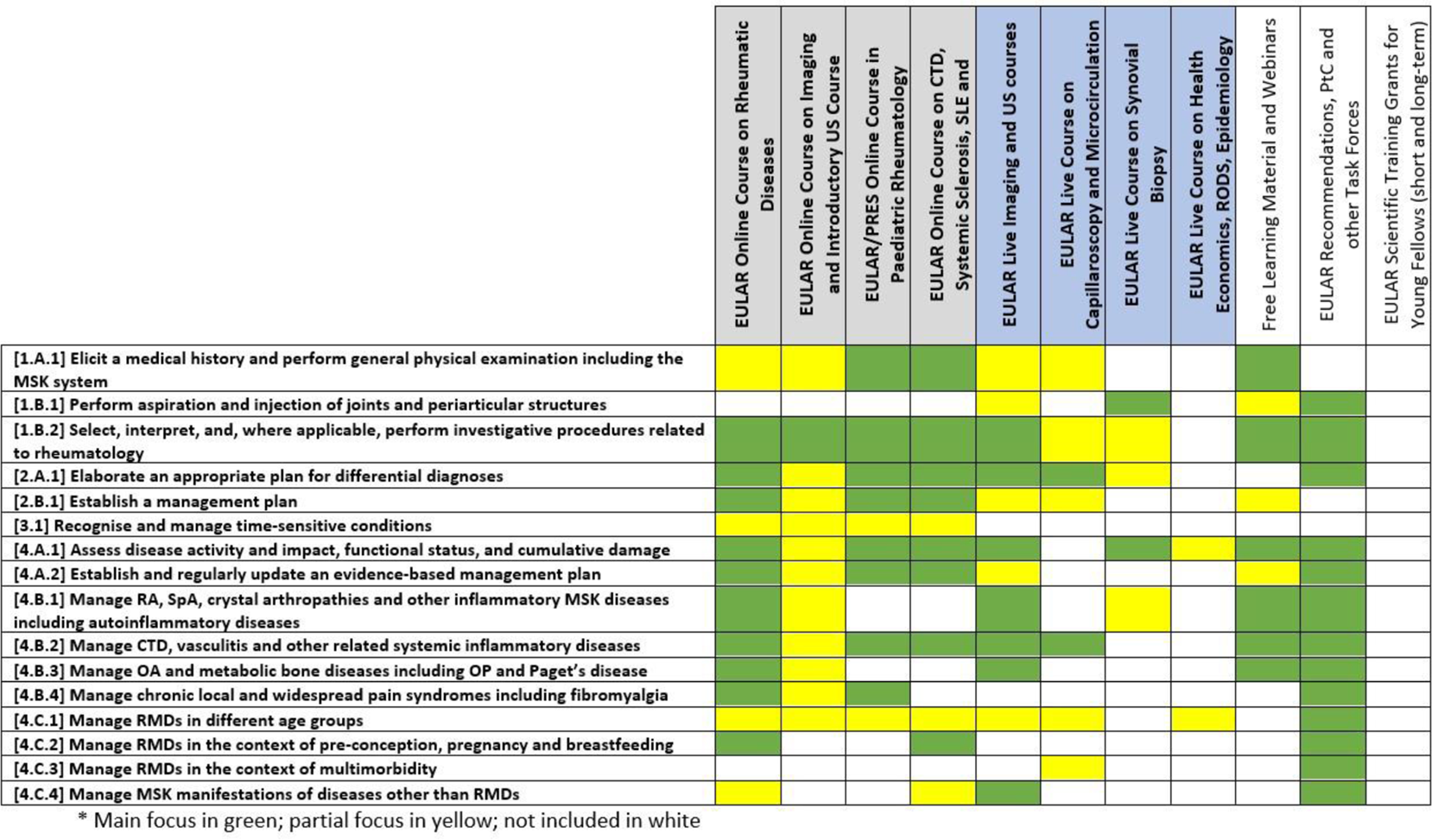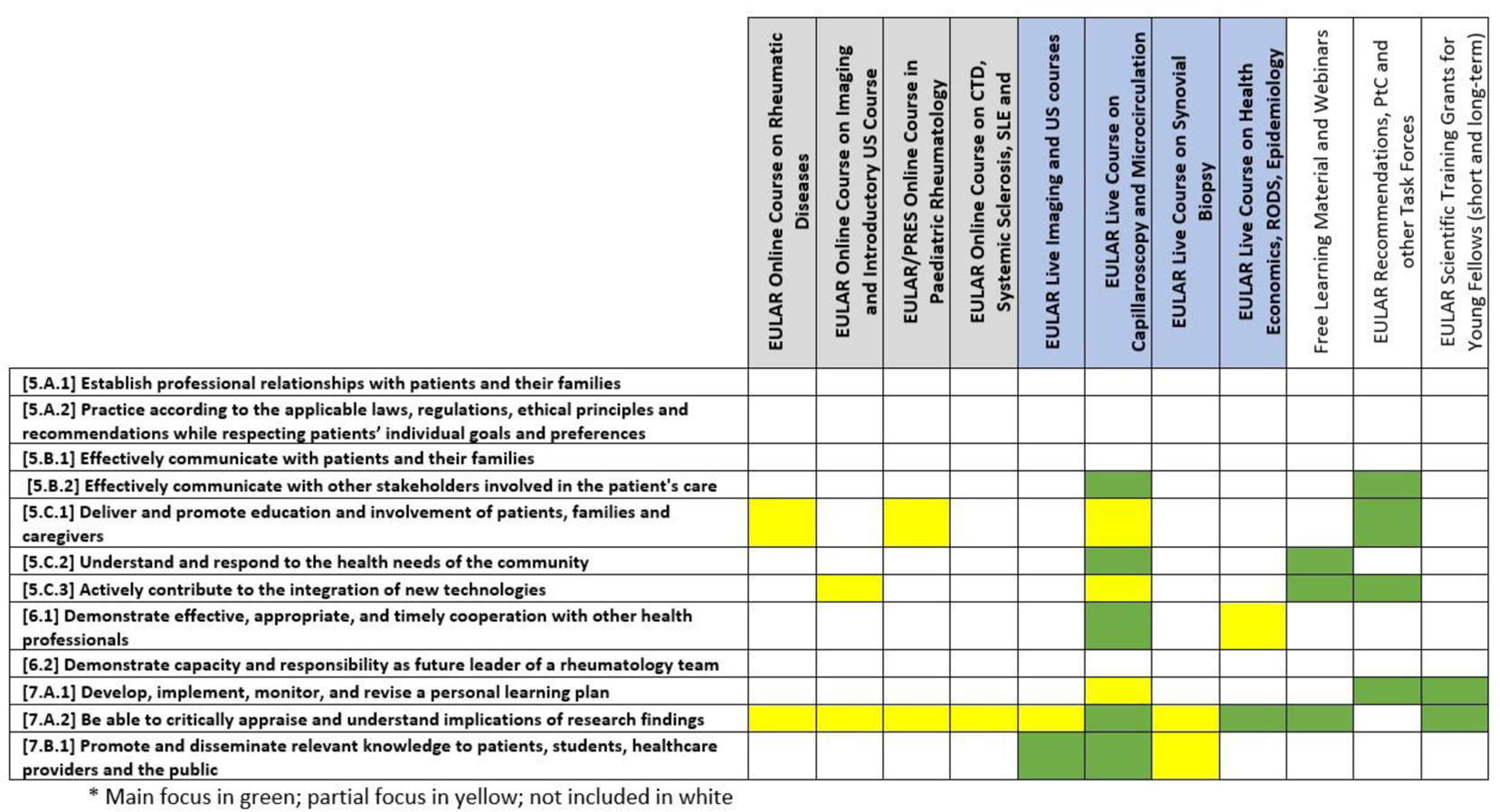

Background: The recently published EULAR-UEMS standards for the training of European rheumatologists [1] define 28 individual competences that should be acquired during training. EULAR Education offers a large number of training courses and opportunities, however a mapping of these opportunities to a European set of training standards has not been performed so far. This may allow identification of gaps in the educational offer that can guide development of future courses and learning material.
Objectives: To map the current EULAR educational offer to the competences in the EULAR-UEMS standards for training.
Methods: Within the Standards Working Group of the EULAR Education Committee, the educational offer provided by EULAR was identified through the School of Rheumatology website (
Results: The mapped EULAR educational offer included 9 online courses with over 120 modules, 10 live courses, webinars from the Education or Research series and two scientific grants (long and short-term scientific training grants for young fellows). Within the free learning material, eight initiatives were included, plus all recommendations and other EULAR task force deliverables.
Tables 1 and 2 visually depict the mapping for rheumatology-specific and generic competences respectively.
Within rheumatology-specific competences (domains 1-4), all were covered by several educational products. However, some were covered only by a few initiatives (Competence (C) 4.C.3 “Manage RMDs in the context of multimorbidity”) or received a partial focus (C 3.1 “Recognise and manage time-sensitive conditions”). Additionally, for C 1.B.1 “Perform aspiration and injections of joints and periarticular structures” we could only identify materials related to US-guided injections and C 4.C.1 “Manage RMDs in different age groups” was limited to the paediatric age.
Most generic competences (domains 5-7) were covered by fewer initiatives. We didn’t retrieve specific training material in four generic competences, three within Domain 5 (the physician-patient relationship) – C 5.A.1 “Establish professional relationships with patients and their families”, C 5.A.2 “Practice according to the applicable laws, regulations, ethical principles and recommendations while respecting patients’ individual goals and preferences” and C 5.B.1 “Effectively communicate with patients and their families” – and one in Domain 6 (the interdisciplinary and multidisciplinary team) – C 6.2 “Demonstrate capacity and responsibility as future leader of a rheumatology team”. The only competence covered in a substantial number of initiatives was C 7.A.2 “Be able to critically appraise and understand the implications of research findings”.
Conclusion: The EULAR educational offer includes a multitude of materials relevant to most, but not all, of the 28 individual competences from the EULAR-UEMS Standards. Identified gaps included communication and leadership as well as multimorbidity and time-sensitive conditions. Further work will help guide future EULAR educational endeavours.
REFERENCES: [1] Alunno et al. Ann Rheum Dis 2023;82:1107-1113.
Table 1. Mapping of EULAR’s educational initiatives to the EULAR-UEMS standards for training of European rheumatologists (domains 1-4)

Table 2. Mapping of EULAR’s educational initiatives to the EULAR-UEMS standards for training of European rheumatologists (domains 5-7)

Acknowledgements: NIL.
Disclosure of Interests: None declared.